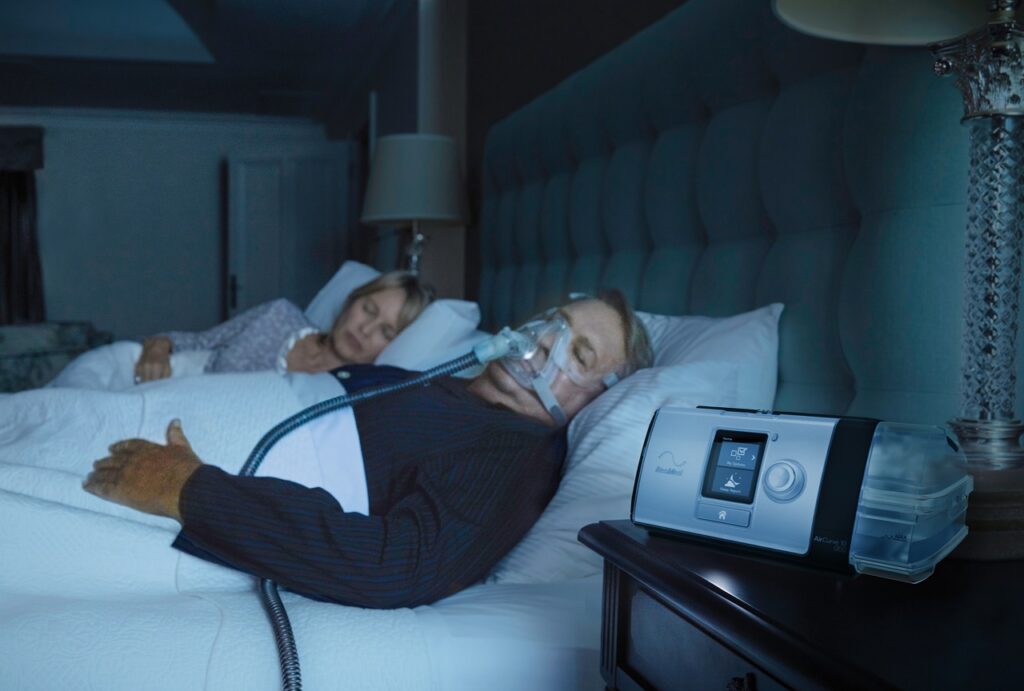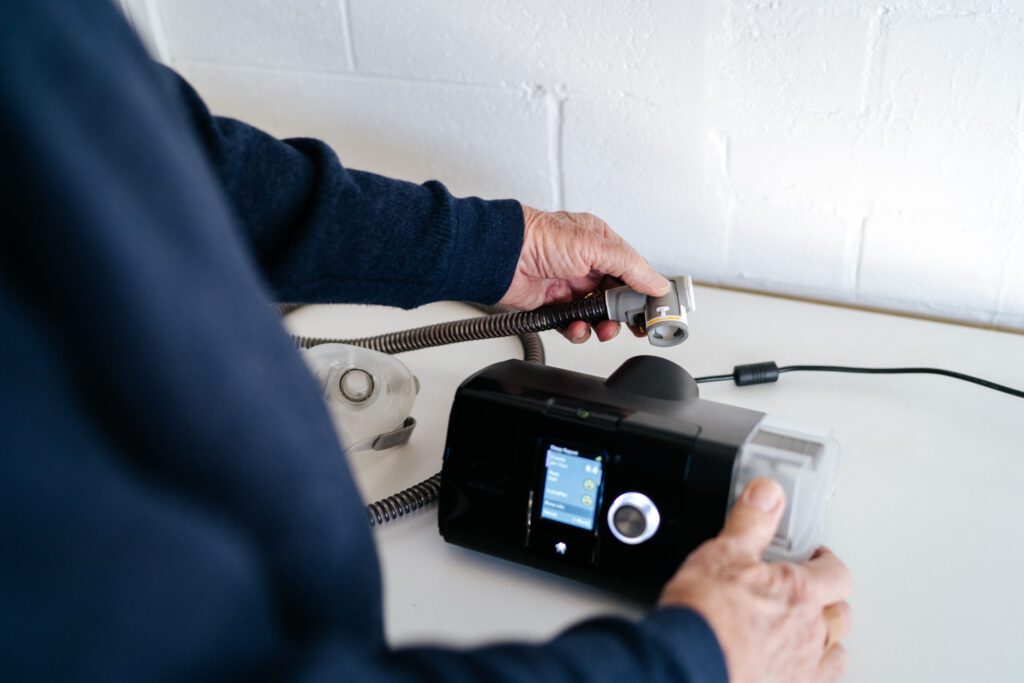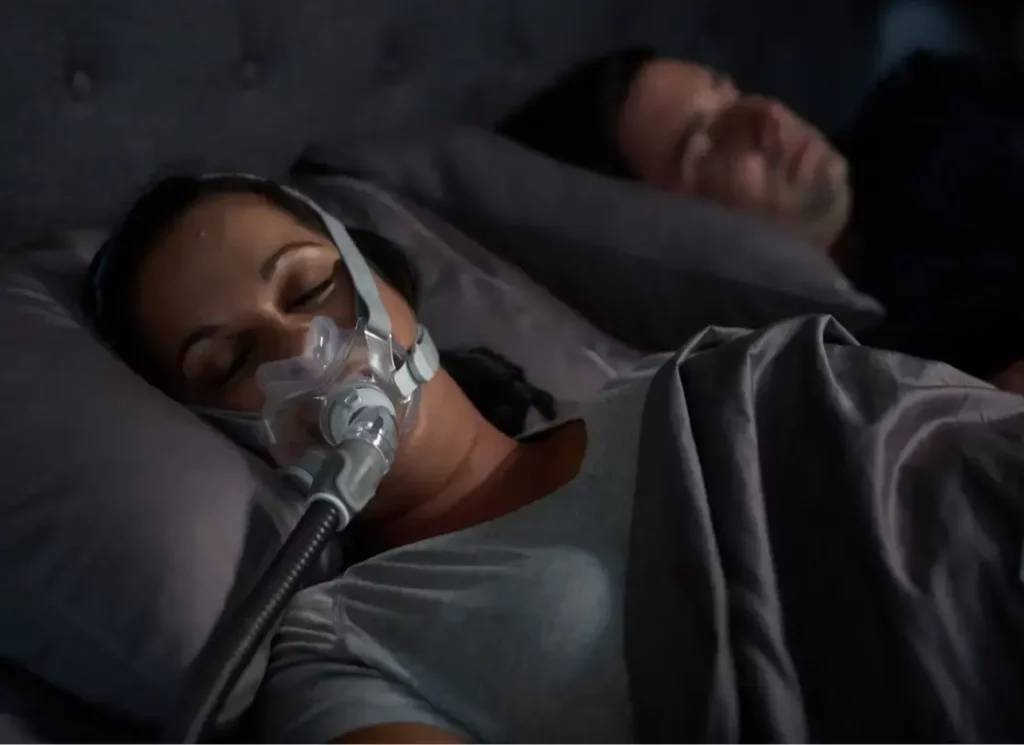Continuous Positive Airway Pressure (CPAP) therapy is a widely used treatment for obstructive sleep apnoea. While it can significantly improve sleep quality and overall health, users often encounter challenges with their CPAP masks. In Australia, where the prevalence of sleep apnoea is on the rise, understanding these common problems and their solutions can enhance the CPAP experience. This article explores five frequent issues faced by CPAP users and offers straightforward solutions to help ensure a more comfortable and effective therapy.
1. Mask Leaks
One of the most common issues with CPAP masks is leakage. A poorly fitting mask can lead to air escaping, which not only reduces the effectiveness of the therapy but can also cause discomfort and disrupt sleep. This can be particularly frustrating for users who rely on CPAP therapy for managing sleep apnoea, as consistent and uninterrupted airflow is crucial for effective treatment.
With the right adjustments and care, CPAP mask Australia therapy can lead to restful nights and revitalised days, paving the way for improved health and well-being.
Identifying the Cause
Leaks can occur for various reasons, including an incorrect mask size, improper positioning, or facial hair. It’s essential to identify the source of the leak to address it effectively. Users should check the mask’s fit regularly, especially if they notice a change in their comfort level or if they have recently undergone weight changes. Additionally, environmental factors such as humidity levels in the bedroom can affect the mask’s seal, making it vital to consider these elements when troubleshooting leaks.

Solutions to Reduce Leaks
To minimise leaks, consider the following solutions:
- Adjust the Fit: Ensure the mask is snug but not overly tight. Most masks come with adjustable straps that can help achieve a better fit.
- Try Different Sizes: Masks come in various sizes and shapes. If leaks persist, it may be worthwhile to try a different size or style.
- Maintain Facial Hair: If facial hair is causing leaks, consider trimming it or opting for a mask designed for users with beards or moustaches.
Moreover, regular maintenance of the mask itself is crucial. Cleaning the mask daily can prevent the build-up of oils and debris that may compromise the seal. It is advisable to use mild soap and warm water for cleaning, ensuring that all components are thoroughly dried before reassembly. Additionally, users should replace their masks and cushions as recommended by their healthcare provider, as wear and tear can exacerbate leakage issues over time.
Another innovative solution to consider is the use of CPAP pillow designs that accommodate the mask’s shape. These specially designed pillows can help maintain the mask’s position throughout the night, reducing the likelihood of leaks caused by movement during sleep. Furthermore, some users have found success with nasal pillows or hybrid masks, which can offer a more comfortable alternative and may reduce the incidence of leaks altogether, allowing for a more restful night’s sleep. Read more about movement at https://learningcenter.unc.edu/tips-and-tools/movement-and-learning/
2. Skin Irritation
Skin irritation is another prevalent issue among CPAP users. The mask can cause pressure sores, redness, or rashes, particularly in sensitive areas of the face.
Understanding Skin Reactions
Skin irritation can result from prolonged contact with the mask material, moisture build-up, or allergens in the mask material. It is crucial to address these irritations promptly to avoid more severe skin issues. The skin’s response can vary significantly from person to person; some may experience mild discomfort, while others may develop more pronounced reactions that necessitate medical attention. Factors such as skin type, existing dermatological conditions, and even the climate can exacerbate these reactions, making it essential for users to remain vigilant about their skin health.

Preventive Measures and Remedies
To prevent and treat skin irritation, consider the following:
- Choose the Right Material: Opt for masks made from hypoallergenic materials that are less likely to irritate the skin.
- Clean Regularly: Regular cleaning of the mask and its components can reduce the risk of irritation caused by bacteria or allergens.
- Use Barrier Creams: Applying a barrier cream or gel can help protect the skin from irritation caused by friction.
In addition to these measures, it is advisable to regularly assess the fit of the mask. A mask that is too tight can exacerbate pressure sores, while one that is too loose may cause chafing. Users should also consider the use of mask liners, which can provide an extra layer of cushioning between the mask and the skin, further reducing the risk of irritation. Furthermore, maintaining a consistent skincare routine that includes moisturising can help keep the skin hydrated and resilient, making it less susceptible to irritation from CPAP equipment.
3. Discomfort and Pressure Points
Many users report discomfort from pressure points where the mask contacts the face. This discomfort can lead to difficulty falling asleep or staying asleep throughout the night. Click here to find more about discomfort.
Identifying Pressure Points
Pressure points are typically found on the nose, cheeks, or forehead, depending on the mask style. Recognising where discomfort occurs can help users find targeted solutions.
Strategies for Comfort
To alleviate discomfort and pressure points, consider the following strategies:
- Adjust the Straps: Ensuring the straps are not too tight can help reduce pressure on sensitive areas.
- Use Padding: Many manufacturers offer additional padding or cushions that can be applied to the mask to enhance comfort.
- Consider Alternative Masks: If discomfort persists, exploring different styles of masks, such as nasal pillows or full-face masks, may provide a better fit.
4. Dryness and Nasal Congestion
CPAP therapy can sometimes lead to dryness in the nasal passages or throat, causing discomfort and nasal congestion. This issue can significantly affect the quality of sleep and the overall effectiveness of the therapy.
Understanding the Causes
Dryness can be exacerbated by the CPAP machine’s airflow, especially in environments with low humidity. Additionally, some users may be more sensitive to airflow changes, leading to increased nasal congestion.
Solutions for Dryness and Congestion
To combat dryness and nasal congestion, consider the following solutions:
- Use a Humidifier: Many CPAP machines come with built-in humidifiers, or users can purchase an external humidifier to add moisture to the air.
- Adjust Humidity Settings: If using a built-in humidifier, experiment with different humidity levels to find the most comfortable setting.
- Stay Hydrated: Drinking plenty of water throughout the day can help maintain moisture levels in the body and reduce dryness.
5. Noise from the CPAP Machine
While modern CPAP machines are designed to operate quietly, some users may still experience noise that disrupts their sleep or that of their partners. Understanding how to manage this noise can enhance the overall CPAP experience.
Identifying the Source of Noise
Noise can originate from the machine itself, the airflow through the mask, or even the tubing. Identifying the source of the noise can help in finding an appropriate solution.
Reducing Noise Levels
To minimise noise from the CPAP machine, consider these strategies:
- Check the Machine Placement: Ensure the machine is placed on a stable surface, as vibrations can amplify noise. Using a soft mat underneath can help absorb sound.
- Inspect the Tubing: Ensure the tubing is not kinked or obstructed, as this can create additional noise. Regularly check for wear and tear that may contribute to sound.
- Consider a Quieter Model: If noise continues to be an issue, it may be worth exploring newer, quieter models of CPAP machines designed for minimal sound output.
Conclusion
CPAP therapy can be life-changing for those suffering from obstructive sleep apnoea, but it is not without its challenges. By understanding the common problems associated with CPAP masks and implementing the simple solutions outlined in this article, users can enhance their comfort and compliance with therapy. Whether it’s addressing leaks, skin irritation, discomfort, dryness, or noise, proactive measures can significantly improve the CPAP experience. For those struggling with these issues, consulting with a healthcare provider or a sleep specialist can provide additional guidance tailored to individual needs.
Read more at: The Best CPAP Masks for Mouth Breathers What You Need to Know

